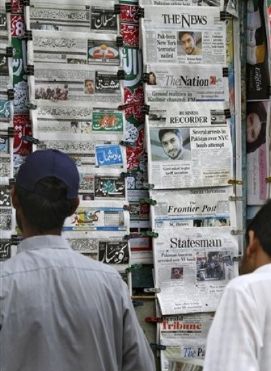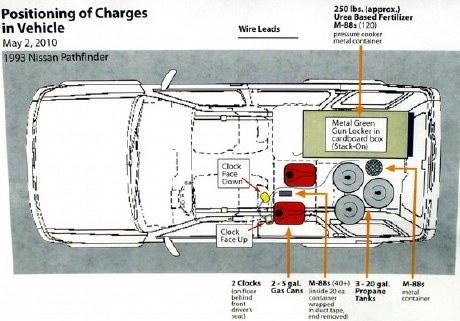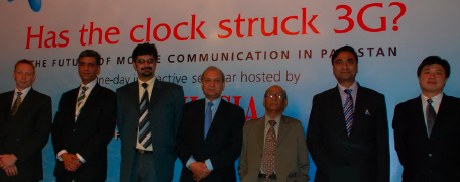Adil Najam
 Here is the good news: If you read the editorials in Pakistan’s major English newspapers today on the Faisal Shahzad episode, they mostly get it right. I have not yet read all the major Urdu newspaper editorials, but the ones I have also get it mostly right. And that is even more important.
Here is the good news: If you read the editorials in Pakistan’s major English newspapers today on the Faisal Shahzad episode, they mostly get it right. I have not yet read all the major Urdu newspaper editorials, but the ones I have also get it mostly right. And that is even more important.
Here is the even better news: All of them recognize something vital and vitally important – and something that too much of the US media has missed. That much more important than figuring out all the trivia that we can muster about Faisal Shahzad, is the enterprise of finding out what his case tells us about the changing landscape of alienation, anger and, ultimately, extremist violence; and, more importantly, about what needs to be done about it.

Here is the bad news: These editorials in the Pakistani press are also right in the diagnosis that Faisal Shahzad has not only increased the monumental challenges that Pakistan already faces in dealing with the terrorist threats. Threats that are (mostly) targeting Pakistanis in Pakistan, but also remain directed outside Pakistan’s borders.
Here is the even more bad news and a possible gleam of hope: A careful reading of these editorials also makes clear that although Pakistan is now doing much more on dealing with terrorism than it once did, it needs to do much more, but also that doing so is neither easy nor guaranteed to easy and early success. However – and this is the gleam of hope – there is a conviction in these editorials that tackling terrorism head-on (both of the ‘domestic’ and ‘export’ variety’) is in Pakistan’s own interest and something that we should do not because outside forces want us to do but because we ourselves need to do. The fact that this conviction is beginning to show roots – even if only in editorial writers in the beginning – is clearly a good thing.
Read Full Post
Adil Najam
 Pakistan-born and recently naturalized US-citizen Faisal Shahzad has been identified as and arrested for being the man behind the failed car bombing attempt in New York City.
Pakistan-born and recently naturalized US-citizen Faisal Shahzad has been identified as and arrested for being the man behind the failed car bombing attempt in New York City.
The media in the US as well as in Pakistan is abuzz about him and information pours in so fast that it is very difficult to keep track of it. In these moments of information overload – when we know much and understand little – at least a few things should be clear to all and beyond dispute: the bombing attempted in New York City was heinous in intent and we should all be thankful that it was neither well-planned nor well-executed and the mayhem and murder that was intended was averted.
Authorities in Pakistan have done the right thing by assuring US authorities that they will cooperate fully in any investigation of this incident. Pakistanis in America should do the same. More than that, we need to be thinking about what happened here, and why. If, indeed, Faisal Shahzad was the man behind this attempted terror attack he may have (thankfully) caused no actual damage to New York City but he could deeply mutilate the reputation and self-confidence of the Pakistani community in the United States. One hopes that just as the citizens of New York did not let the car bomb blow up, Pakistanis in America will not let him destroy the self-confidence that this community has been so painstakingly reconstructing since the tragedy of 9/11.
Read Full Post
Babar Bhatti
At ATP we have talked about the phenomenal growth of telecommunication industry in Pakistan. After many years of investment and growth, the telecommunication industry is facing economic challenges, price wars and flat revenues. With nearly 100 million subscribers, some think that the market may be close to saturation. Others argue that the country offers a lot more potential for information and telecommunication services – only if we could find the next killer application.

Today, most of the telecom revenue comes from voice and to a small extent from value added services such as SMS and ringtone. Other data services such as mobile financial services, mobile web browsing, mobile social networking etc (also known as Mobile 2.0) have not become popular in Pakistan and in other developing countries. Compare that with the rapid adoption of applications in US and EU on smart phones such as iPhone and BlackBerry and how that results in productivity, higher revenues and innovation.
Read Full Post
 Here is the good news: If you read the editorials in Pakistan’s major English newspapers today on the Faisal Shahzad episode, they mostly get it right. I have not yet read all the major Urdu newspaper editorials, but the ones I have also get it mostly right. And that is even more important.
Here is the good news: If you read the editorials in Pakistan’s major English newspapers today on the Faisal Shahzad episode, they mostly get it right. I have not yet read all the major Urdu newspaper editorials, but the ones I have also get it mostly right. And that is even more important.

 Pakistan-born and recently naturalized US-citizen Faisal Shahzad has been identified as and arrested for being the man behind the failed car bombing attempt in New York City.
Pakistan-born and recently naturalized US-citizen Faisal Shahzad has been identified as and arrested for being the man behind the failed car bombing attempt in New York City.






















































